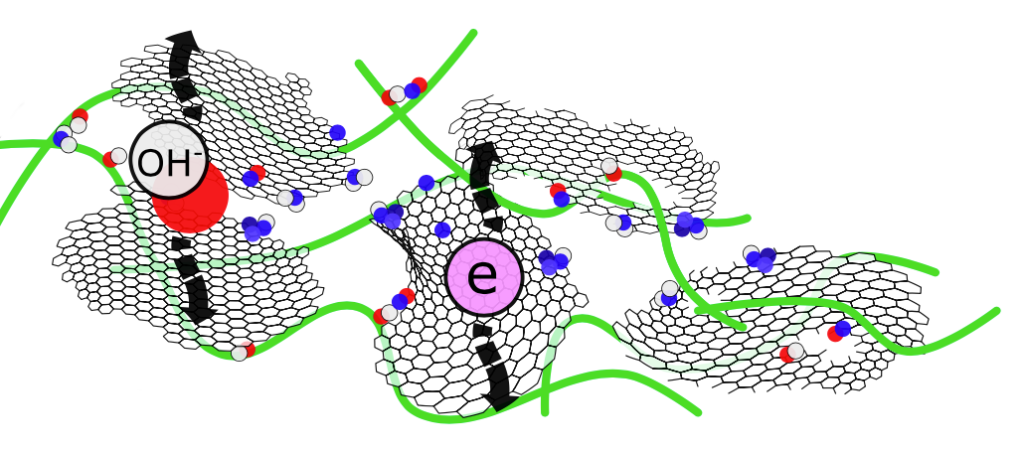Success Story: The NanoElMem project reached its final success. The project presents an innovative approach towards the design and fabrication of materials for the creation of direct alkaline ethanol fuel cells (DAEFC). Emphasis was put on the development of platinum (Pt)-free anode catalysts and nano-composite membranes, where environmentally friendly and sustainable polysaccharides and inorganic materials were employed. The vast potential of graphene, from a scientific and applied point of view, was harnessed as an active component in polysaccharide-based nanocomposite membranes.
In order to arrive at an innovative and efficient product by the end of the project’s run, the work-plan has been constructed around the current technical obstacles, that limit full implementation of fuel cells in a commercial scale; by directly addressing these limitations, i.e. cost, performance and durability. Reducing the costs of existing fuel cells was achieved by development of highly active ethanol oxidation reaction (EOR) catalysts and noble metal free oxygen reduction reaction (ORR) catalysts. Catalysts synthesis routes were published in three high-impact journals (in 2021 Journal of Energy Chemistry, in 2019 Advanced Material Interfaces, in 2019 Applied Catalysis B: Environmental)
In terms of performance, DAEFCs struggle mainly with relatively low power density. This major technical problem was tackled by the design of ion-exchange membranes with enhanced efficiency and durability while maintaining low costs. Here, bio-based polysaccharide polymers were used, which served as the matrix for newly synthesized (N)-doped and quaternized graphene oxide (GO) nano-fillers, which improved membrane ion conductivity, thermal and mechanical stability, and prevented ethanol crossover through cross-linked membranes. Membrane preparation and characteristic were presented in ACS sustainable chemistry & engineering.
In course of the project, Abalonyx has developed a new nitrogen doped graphene oxide, of which preparation has been standardized and a protocol for larger scale preparation is being prepared. The product was launched for sale in October 2020 through Abalonyx online offerings and through distributors in UK, Japan and USA. The product was not patented, the preparation method is being kept as trade secret.
Project presented significant scientific impact with 4 published scientific articles in high-impact journals, 21 conference contributions, of which 5 were invited lectures. At the moment of writing, 2 articles are under revision, among them one is review article on the topic of anion exchange membranes and 2 articles in preparation phase.

The project was financed in the frame of M-era.NET program (NanoElMem – Designing new renewable nano-structured electrode and membrane materials for direct alkaline ethanol fuel cell), grant number C3330-17-500098.

